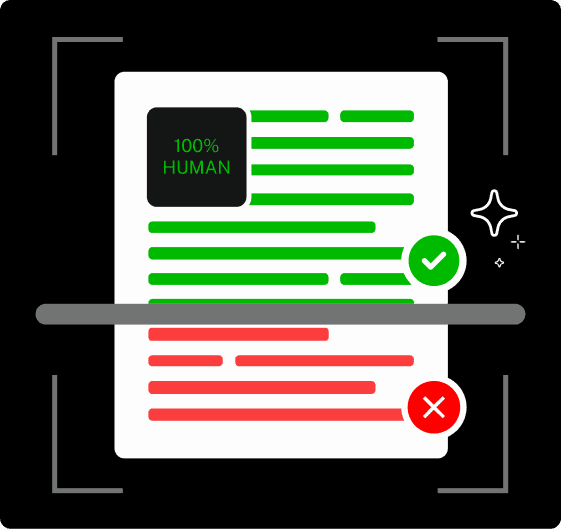I’m longer than a short story, shorter than a novel, and just the right size for a rainy weekend. What am I?
You guessed it! I’m a novella.
If you’re a fan of short stories but hate that they end so soon, but at the same time loathe novels that drag on, you’re like many of us.
Novellas hit that sweet spot, where it’s just enough to deliver a full emotional arc and respect the reader’s time.
For writers, it’s also a creative playground to explore themes and characters without the demand of a full-length novel.
It forces you to be precise and make narrative decisions fast—a beast that matches your ambition and your calendar.
It offers both freedom and focus that you won’t always get when writing short stories or novels.
But here’s the thing: Novellas exist in this weird middle ground that makes everyone a little uncomfortable.
Publishers don’t know what to do with them. Contest judges have different rules. And let’s not even get started on what readers expect.
While we can’t please everybody, one question remains important. How long should your novella really be?
Let’s clear up the confusion once and for all.
The Standard Word Count for a Novella

Most writing organizations agree that novellas fall somewhere between 17,500 and 40,000 words. That’s a pretty wide range, right?
There’s a reason for that flexibility.
The Science Fiction and Fantasy Writers of America (SFWA) sets their novella category at 17,500 to 40,000 words. The Hugo Awards use the same range.


Never Worry About AI Detecting Your Texts Again. Undetectable AI Can Help You:
- Make your AI assisted writing appear human-like.
- Bypass all major AI detection tools with just one click.
- Use AI safely and confidently in school and work.
These aren’t random numbers but based on decades of publishing tradition and reader expectations.
But here’s where it gets tricky. Some publishers consider anything over 20,000 words a novella. Others won’t call it a novella unless it hits 30,000 words. The inconsistency is maddening.
To make your life simple, if your story is between 20,000 and 35,000 words, you’re safely in novella territory.
Anything shorter might be called a novelette or a long short story. Anything longer starts creeping into short story territory.

To keep your manuscript on track without constantly flipping to your word processor’s status bar, use Undetectable AI’s Word Counter.
It’s part of a growing toolbox designed for writers who care about precision.
How Publishers and Contests Define a Novella
Traditional publishers often struggle with novellas because they don’t fit neatly into their business model.
A 25,000-word manuscript costs almost as much to produce as an 80,000-word novel, but they can’t charge the same price.
Indie publishers and digital-first companies are more novella-friendly. They see the format as perfect for busy readers who want complete stories without massive time commitments.
Contest definitions vary wildly too.
The Nebula Awards match the SFWA guidelines (17,500-40,000 words). But smaller contests might have completely different categories.
Some contests break it down even further:
- Short story: Under 7,500 words
- Novelette: 7,500 to 17,500 words
- Novella: 17,500 to 40,000 words
- Novel: Over 40,000 words
Academic presses sometimes consider anything under 50,000 words a novella.
Literary journals might cap novellas at 20,000 words. It’s enough to make your head spin.
The key is researching your target market before you submit. Don’t assume everyone uses the same definitions.
Famous Novellas and Their Word Counts

Let’s look at some famous novellas to get a feel for what different word counts actually look like.
- Of Mice and Men by John Steinbeck clocks in at around 30,000 words. It’s often taught in schools as a short story, but it’s technically a novella by most standards.
- The Strange Case of Dr. Jekyll and Mr. Hyde by Robert Louis Stevenson is about 25,000 words. Perfect novella length, and it packs an incredible punch.
- Heart of Darkness by Joseph Conrad sits at roughly 38,000 words. It’s on the longer end of the novella spectrum but still fits comfortably in the category.
- More recent examples include The Ocean at the End of the Lane by Neil Gaiman (around 30,000 words) and Breakfast at Tiffany’s by Truman Capote (about 26,000 words).
- Stephen King’s Rita Hayworth and Shawshank Redemption is approximately 35,000 words. Even though it was part of a collection, it stands alone as a perfect example of novella length.
These examples show you don’t need 100,000 words to tell a complete, satisfying story. Some of literature’s most memorable works are novellas.
When to Choose the Novella Format
Not every story needs to be written like a novel. Sometimes the novella format is exactly what your story needs.
Choose the novella format when your story has a tight focus.
If you’re exploring one central conflict or relationship, 25,000 to 35,000 words might be perfect.
You don’t need subplots and secondary characters cluttering up the narrative.
Novellas work great for character studies. You have enough space to dig deep into one or two characters without the ensemble cast that novels often require.
They’re also perfect for experimental narratives.
Want to try second person? Unreliable narrator? Non-linear timeline? The novella length gives you room to play without committing to a full novel.
Genre fiction often benefits from novella length.
Horror stories can build and maintain tension without overstaying their welcome, and science fiction concepts can be fully explored without padding.
Consider novellas if you’re building a series. Readers can sample your world and characters without a huge time investment.
If they love your first novella, they’ll come back for more.
Editing Your Novella to Hit the Right Length
Sometimes, you finish your first draft and realize you’re way off target.
Don’t panic. This is totally normal.
- If your draft is too short, resist the urge to add filler. Instead, look for opportunities to deepen what’s already there. Can you expand the word count of a scene to show more character development? Is there a subplot you introduced but didn’t fully explore?
- Add sensory details and internal monologue. Show more of your character’s thought process. Let scenes breathe a little more.
- If your draft is too long, you’ll need to be ruthless. Cut unnecessary scenes, characters, and subplots. Every element should serve the central story.
- Look for repetitive passages. Are you making the same point multiple times? Combine or eliminate redundant sections.
Once you’ve done a rough pass, this is a great time to fine-tune your language.
Undetectable AI’s AI Humanizer can help you polish awkward phrasing, smooth transitions, and make sure every word earns its place, especially when you’re tightening or expanding for precision.

Sometimes you’ll realize your story wants to be something different. That 15,000-word piece might work better as a long short story.
That 50,000-word manuscript might need to become a novel.
Trust the story. Don’t force it into the wrong category just to hit a target word count.
Curious about our AI Detector and Humanizer? Try them in the widget below!
FAQs
Is 50,000 words too long for a novella?
Yes, 50,000 words pushes into short novel territory. Most industry professionals consider anything over 40,000 words a novel, even if it’s on the shorter side.
That said, some publishers might still market a 50,000-word book as a novella, especially if it has the focused narrative structure typical of novellas.
If your manuscript is 50,000 words, you’re probably better off calling it a short novel and targeting markets that accept shorter novels.
Can I publish a 10,000-word novella?
At 10,000 words, you’re looking at a long short story or novelette, not a novella. Most publishers won’t consider this length a novella.
However, digital publishing has created more flexibility. Some indie publishers and online platforms are happy to publish 10,000-word standalone stories.
You might also consider submitting to literary magazines or anthologies that accept longer short fiction.
What’s the difference between a short story and a novella?
The main difference is length, but that creates other distinctions too.
Short stories typically run under 7,500 words and focus on a single moment, scene, or revelation. They often have just one or two characters and explore one central conflict.
Novellas have space for more complex plots, character development, and multiple scenes. You can have subplots (though not too many) and a larger cast of characters.
Short stories often end with an epiphany or moment of realization. Novellas can have more traditional story arcs with a clear beginning, middle, and end.
Think of short stories as snapshots and novellas as short films. Both can be powerful, but they accomplish different things.
How long is a novella in pages?
This depends entirely on your formatting, but here are some rough estimates:
A 25,000-word novella might be around 100 pages in standard manuscript format (double-spaced, 12-point font). In published book format, it could be anywhere from 80 to 120 pages, depending on font size, margins, and page size.
A 35,000-word novella could run 140 manuscript pages or 100-150 published pages.
Don’t worry too much about page count. Publishers and contests care about word count, not pages. Different fonts and formatting can dramatically change page numbers while keeping the same word count.
Not Too Long, Not Too Short; Just Write
Writing a novella means embracing the in-between. You’re not writing a short story, but you’re not committing to a full novel either. It’s a format that rewards precision and focus.
The key is understanding your target market and story needs.
If you tell the right story in the right way, a 25,000-word manuscript can be just as satisfying and complete as an 80,000-word novel.
Don’t get too hung up on hitting exact word counts. Focus on telling your story well. If it naturally falls into novella length, embrace the format.
Some of literature’s most powerful works are novellas.
Remember that publishing is changing. Digital platforms and indie publishers are more open to novellas than traditional publishers have been.
The format is experiencing a renaissance as readers seek complete stories they can finish in one sitting.Your novella might be exactly what readers are looking for.
Write the story that wants to be written, and let the word count fall where it naturally lands.
And when you’re ready to polish, track, or humanize that manuscript, Undetectable AI has the tools to help you finish strong.
